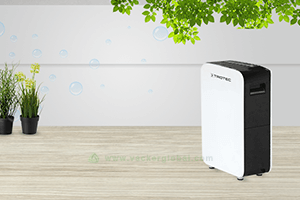Design calculation for selecting the right model of dehumidifier
A dehumidifier is used to reduce the humidity of areas like a living room, warehouses, museums, cold 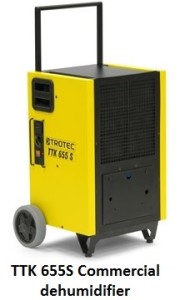 rooms etc.
rooms etc.
Design Calculation of Dehumidifier
Humidity is the number of moisture particles suspended in the air. This is also known as relative humidity and is expressed as %RH.
The capacity of a dehumidifier is expressed either in litre/hour or grams/hour or kilogram/hour.
The capacity of a dehumidifier in non-technical terms means the amount of water to be removed from the atmospheric air.
Steps for design Calculation for selection of a dehumidifier
- We assume that we have a warehouse of 2000 m³. The current humidity is 70% and we have to reduce it to 50%. The normal temperature inside the warehouse is 30°C. We need to calculate the required capacity of the dehumidifier.

- The airflow rate of the HVAC system is 4000 m³/h.
- First of all, convert the humidity to g/m³.
- 70% RH= 138.03 g/m³ at 30°C
- 50% RH= 57.922 g/m³ at 30°C
- Hence the calculation will be : (138.03-57.922) x 2000 x 2 = 320 kg per hour
- This means that you need a total de-humidification capacity of 320 kg per hour. If you are looking at a dehumidifier of 50 kg per hour capacity, this means that 7 numbers of these models will have to be used.
Condensation dehumidifier
A condensation dehumidifier converts the moisture into the water and drains out the water. Hence the capacity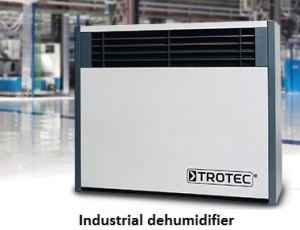 of condensation type models can be expressed in litre per hour. If a model has a capacity of 20 litres per hour, it means that it is capable of converting moisture into the water at a rate of 20 litres per hour. A higher capacity of 30 litres per hour means that moisture removal is possible at a higher capacity of 30 litres per hour.
of condensation type models can be expressed in litre per hour. If a model has a capacity of 20 litres per hour, it means that it is capable of converting moisture into the water at a rate of 20 litres per hour. A higher capacity of 30 litres per hour means that moisture removal is possible at a higher capacity of 30 litres per hour.
Desiccant dehumidifier
For a desiccant dehumidifier, conversion into water does not happen and hence cannot be expressed in litre per hour. for these models, the capacity is expressed in gram per hour or kilogram per hour.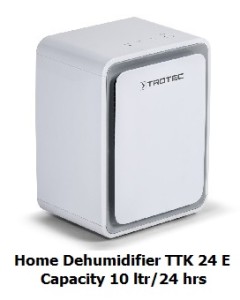
For these models, humidity is absorbed by a special material known as adsorbents.
How to calculate the required capacity of the dehumidifier
The formula for calculation of the required capacity is explained below:
(current humidity in g/m³ – required humidity in g/m³) x room size in m³ x air change rate = Required capacity of the dehumidifier in g/h
Current humidity: You may record the current humidity using a humidity data logger and find out the current humidity. Please find out the maximum humidity over a period of time including different climatic conditions.
Required humidity: What is the humidity that you would want to achieve after installation of the dehumidifier? Please see our guidelines for recommended humidity levels. (These are rough guidelines and will vary depending on your requirements, environment etc.)
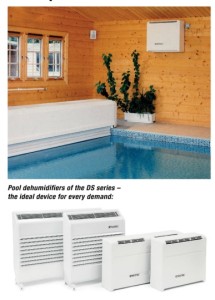
Air change rate: This is based on additional airflow inlet by an HVAC unit
Example: A 2000 m³ warehouse has an air-conditioning system inserting 4000 m³/h of fresh air.
This means the air change rate is 2 (4000/2000).
You should not go below 1 for this calculation, even if there is no additional airflow.
Please see the entire range of dehumidifiers being supplied by Vacker Global
If you need help on calculation of your dehumidifier please contact us

